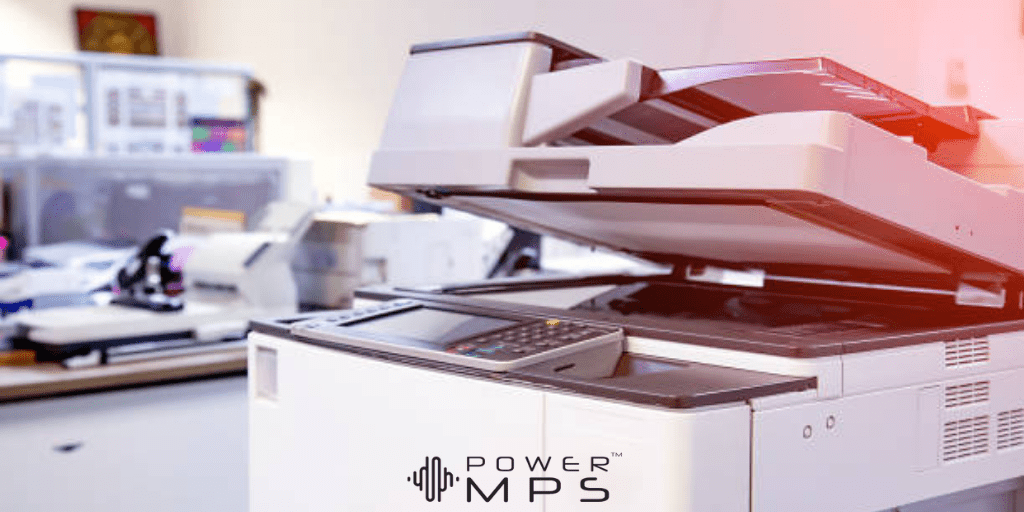How employees will print is not usually at the top of any company’s preferred items to consider when building out plans for their office space. But, even as businesses make moves to reduce paper use, printing is still an essential feature within the office, which is why the local versus networked printer debate is still alive and well.
What’s The Difference Between Local And Networked?
Local printers use a USB or other cord to wire directly into a workstation’s computer. Because they are plugged directly into a specific tower or laptop, they operate solely for that individual location. No other computer can use a particular local printer. Local printers are usually small, desktop machines.
On the other hand, networked printers are machines wirelessly connected to a group of workstations to provide printing services. These printers have no direct line to an individual computer. Instead, they are linked to a local cloud or VPN. Networked printers are usually larger, stand-alone equipment designed to handle actual office use. Here are five reasons businesses should opt to use networked printers:
Networked Printers Offer Lower Overhead Costs
Local printers are one per workstation, which means a company with more employees will spend more money on equipment. And it is not always guaranteed that the specific model a business has been using will still be available when a new employee is hired or a new workstation is configured. This lack of consistency can make it hard to estimate actual long-term costs for expansion or replacement.
While network printers usually have a heftier sticker price, the amount of equipment purchased over time is significantly less. One networked machine that can serve an office of thirty or more will usually cost less than purchasing that same number of local printers.
Upkeep Is More Manageable
Office printing goes far beyond the equipment purchase. For every machine, there are parts, maintenance, security, and consumables. But the needs of each device will be different depending on the brand and configuration of the printer. It is for this very reason that network printers are more manageable than local configurations.
Offices using a local printer configuration must purchase a variety of paper, parts, toner, and ink. It also makes maintenance more difficult, as there are far fewer services offering repair and maintenance services for smaller, local machines – especially if they are not a major brand name.
Network printers are primarily produced by a group of well-known manufacturers. These corporations partner with managed print services (MPS) providers, equipment resellers, and printer maintenance technicians to offer easy access to ink, toner, paper, parts, and service. As a result, network printers are generally easier to keep running long-term.
Network Printers Offer More Convenience
Reaching over to your local printer might seem easier to an individual person. But network printers generally have a higher print capacity and faster print speeds than local printers. Many network printers also provide additional paper handling capabilities, such as specific tray selection. Having dedicated trays for these print jobs can be a time-saver for businesses that occasionally print on letterhead or legal paper.
In addition to general functionality, network printers have additional benefits for employees. For example, remote workers could select to print documents for someone in the office at one of the central business printers. And in-office employees who would lose printing capabilities if their local printer went down can instead choose a different machine if they have access to network printers.
Flexible Installation Better Fits The Office Environment
For example, local printers must be plugged into their assigned workstation and a nearby power source. These requirements significantly limit the available positioning of each device. On the other hand, networked printers can be connected through wi-fi, eliminating the need for anything other than a power outlet. So, rather than taking up precious desk or foot space, network printers can be positioned for easy access by all employees to which they are connected.
Network Printers Offer Better Security, Monitoring, And Tracking
Offices with more than one local printer provide a multitude of potential access points for hackers. To reduce the risk, IT must access each workstation and printer individual to apply the appropriate firewalls and configurations to block access and keep the business safe. On the other hand, network printers are fewer in number and can be remotely accessed to install and configure updates at regular intervals.
But it is not simply IT that sees the benefit of printers that use a network. Network computers are designed to operate a series of applications that allow a business’s MPS partner, when using platforms like Power MPS, to access the machines and determine a wide range of information. This data can help the company see its actual printing numbers as well as ink and toner levels. Many companies use this information to estimate ordering timelines, track “going green” goals, and making other business-related decisions.

